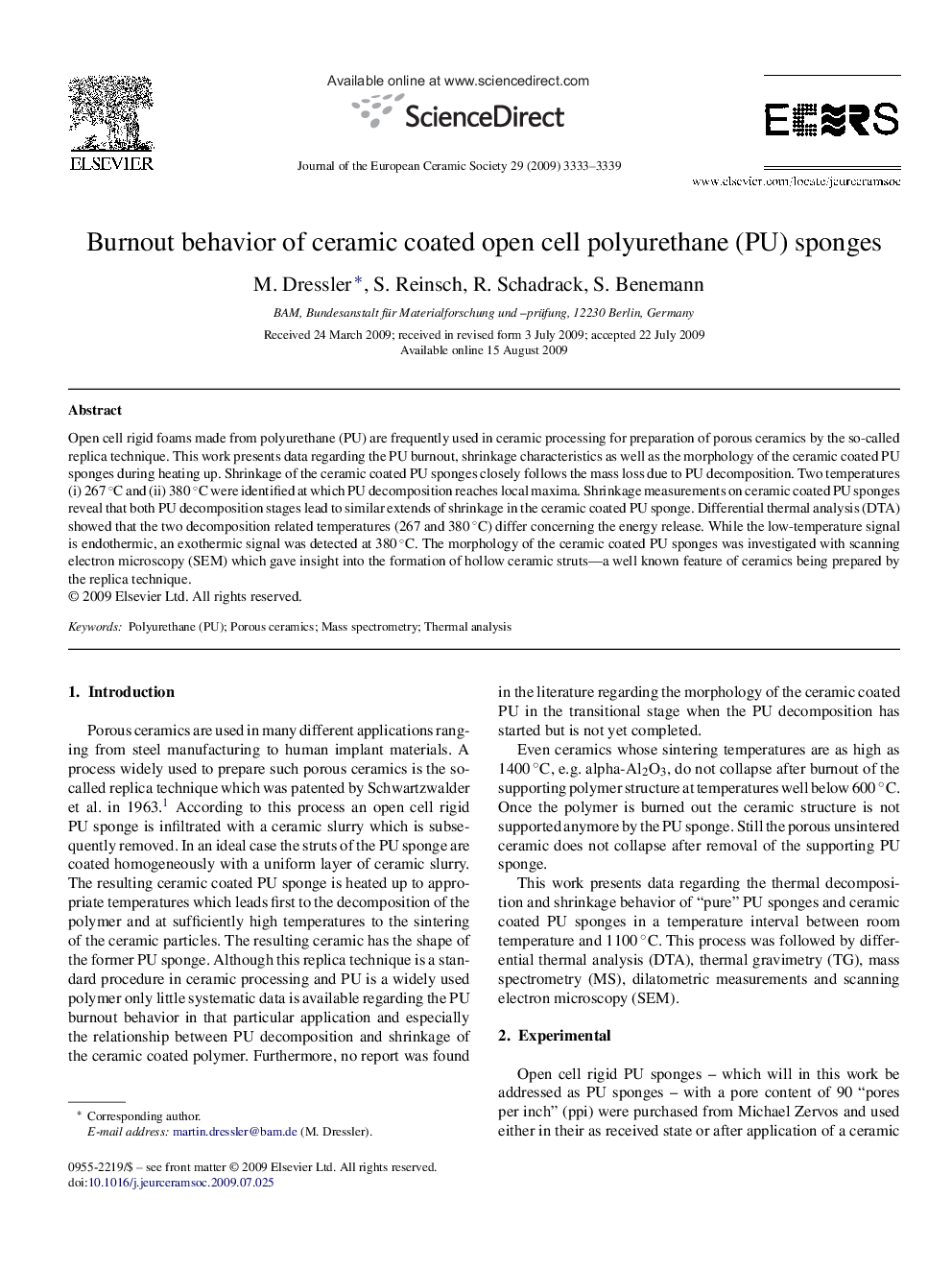| Article ID | Journal | Published Year | Pages | File Type |
|---|---|---|---|---|
| 1476050 | Journal of the European Ceramic Society | 2009 | 7 Pages |
Open cell rigid foams made from polyurethane (PU) are frequently used in ceramic processing for preparation of porous ceramics by the so-called replica technique. This work presents data regarding the PU burnout, shrinkage characteristics as well as the morphology of the ceramic coated PU sponges during heating up. Shrinkage of the ceramic coated PU sponges closely follows the mass loss due to PU decomposition. Two temperatures (i) 267 °C and (ii) 380 °C were identified at which PU decomposition reaches local maxima. Shrinkage measurements on ceramic coated PU sponges reveal that both PU decomposition stages lead to similar extends of shrinkage in the ceramic coated PU sponge. Differential thermal analysis (DTA) showed that the two decomposition related temperatures (267 and 380 °C) differ concerning the energy release. While the low-temperature signal is endothermic, an exothermic signal was detected at 380 °C. The morphology of the ceramic coated PU sponges was investigated with scanning electron microscopy (SEM) which gave insight into the formation of hollow ceramic struts—a well known feature of ceramics being prepared by the replica technique.
